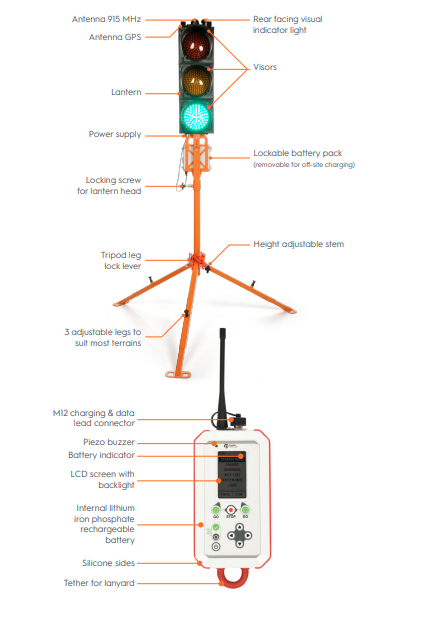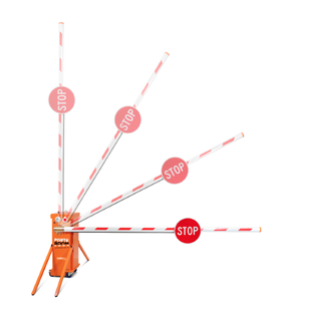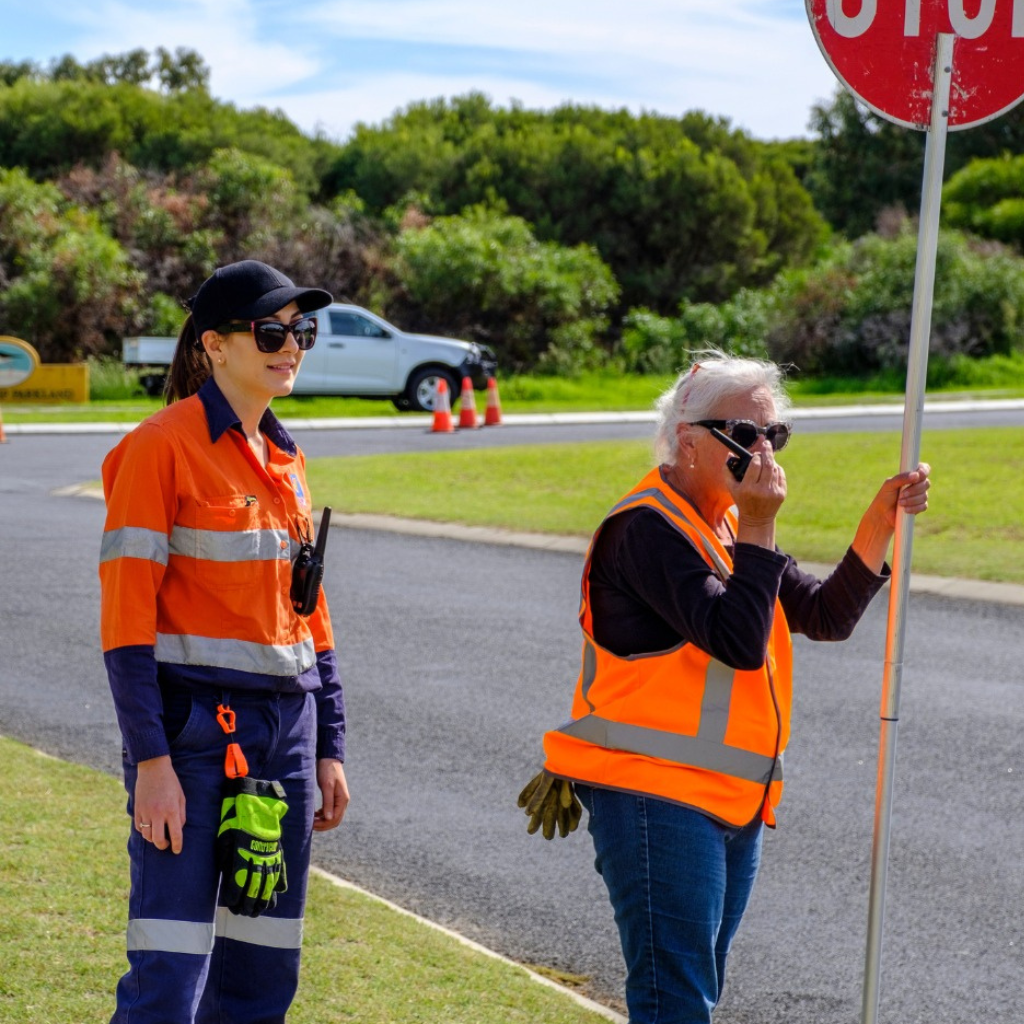Austroads Guide to Temporary Traffic Management (AGTTM) states that portable traffic control devices (PTCD) are the preferred method to control traffic. Portable traffic control devices (PTCD) were identified and adopted as a means of allowing traffic controllers to perform their roles at a safer distance from the traffic in high-risk environments. These devices include Portable Traffic Signal Systems (PTSS) and manually controlled boom barriers.
New Changes
As of 1 July 2022 all work on roads controlled by Main Roads (Highways and Main Roads) will no longer permit the use of Traffic Controllers using Stop-Slow bats to control traffic (some exceptions will apply) and Portable Traffic Control Devices (PCTDs) must be used. To read more on the Traffic Management Alert for mandatory use of PTCDs [click here]
PTCDs must be used as the method of traffic control, for roads with:
- any road that is under the control of Main Roads WA *; or
- any road not controlled by Main Roads WA with
– a permanent speed limit of 90 km/h or more and over 2,000 vpd; OR
– a permanent speed limit of 70 km/h or more and over 10,000 vpd**
* refer to exceptions list within the Main Roads WA Code of Practice for Works on Road
**except at permanent traffic signals.
However, it is accepted that it is not practical to use PTCDs for all work types and locations and higher-risk locations need to be prioritised.
Works on roads outside of the above should still consider the use of PTCDs and they may still be required based on a risk assessment. Traffic management planners should also refer to contractual requirements that may require the use of PTCDs regardless of the speed and/or traffic volume.
The use of PTCDs significantly reduces the traffic controller’s exposure to risk by enabling traffic control from a safe location. The workplace safety benefits of using portable traffic lights were demonstrated at an incident north of Portland, Victoria on March 15, 2018, in which an occupant of a vehicle was tragically killed and four others were airlifted to Melbourne hospitals after a fully-loaded log truck crashed into queued traffic. A portable traffic light being used at the site was destroyed, while the traffic controller was uninjured. The damaged equipment has been erected at the traffic management company’s office, as both a graphic reminder of the risks workers encounter and a testament to the safety value provided by the device.
When using PTCDs the following must be considered:
- A Traffic Controller must not be placed in control of PTCDs unless the traffic controller has been trained and is competent in the operation of the device (AGTTM Part 7),
- The PCBU (Person Conducting a Business or Undertaking) must ensure, so far as is reasonably practical, the provision of any information, training, instruction or supervision that is necessary arising from the use of the PTCD (WHS Act 2020, s. 9.3),
- Refer to section 2.6.2 of AGTTM Part 7 for key considerations for determining a safe location
for traffic controllers when using a PTCD. This location should be identified on the Traffic Guidance Scheme (TGS). PTCDs primary benefit is separating the traffic controller from direct interaction with traffic therefore the traffic controller location should be a minimum of 3 m from the live traffic lane. - Traffic Controllers operating PTCDs must be equipped with resources nearby including stop/slow bat and two-way radio, in the event of a PTCD failure.
It is a requirement that portable traffic control device (PTCD) operators hold Main Roads WA Traffic Controller accreditation, however, outside of this it is up to the PCBU to determine the best method for ensuring workers are trained and competent in the use of the devices. Suitable training options may include on-the-job training and verification of competency VoC or undertaking training in the Portable Traffic Control Device (PTCD) units of competency RIIWHS206 and RIIWHS303, may form part of demonstrating competence however this is not yet a mandated Main Roads WA requirement.
Current Approved Devices
The following PTCDs are permitted for use in WA;
Portable Traffic Signals:
- All portable traffic signal systems that comply with AS4191: 2015 Portable traffic signal systems
- eStop, eStop M, eStop Auto (Arrow Emergency Systems)
- Portable Traffic Light (Madison Technologies)
- TriLight (Portable Traffic Light | Trilight)
Please note the above list was approved at the time this article was published, however, it will change therefore it is important to check the Main Roads WA approved list of devices click here.

Boom Barriers
- Portaboom (Traffic Access and Solutions)
- eBoom with portable traffic signal (Arrow Emergency Systems)

Above are Examples of Main Roads Approved PTCDs
To read more on Portable Traffic Control Devices – refer to Main Roads WA Traffic Management for Works on Roads Code of Practice
Not sure whether the road is controlled by Main Roads?
Use Main Roads WA Road Information Mapping System and select the ‘Main Roads Network’ and ‘Main Roads Regions’ checkboxes only
Summary
This is a significant and important change for the traffic management industry, further improving safety standards.
Here at AusQ Training we have already included further learning about PTCDs into our range of traffic management training courses.
Do you have any questions and need further assistance with your traffic management training needs? Get in touch and contact us.


